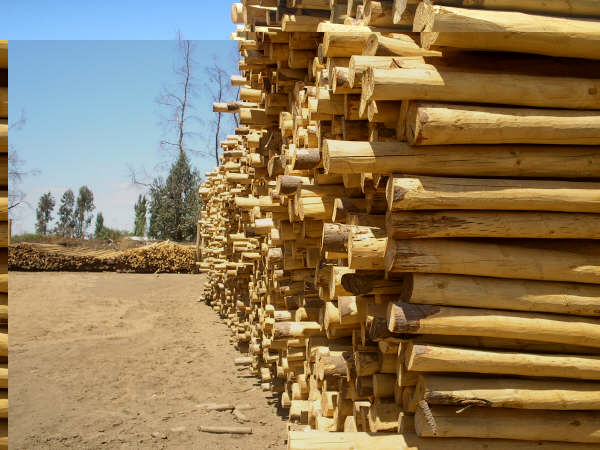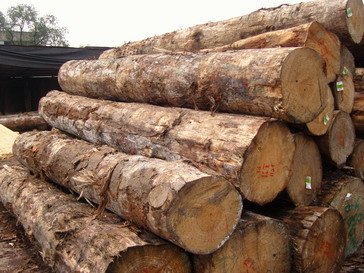Plantation forestry has developed rapidly in New Zealand. In 50 years, the country's industrial wood supply has changed almost completely from natural forests to managed forest plantations, thus emphasising New Zealand Pine as the primary species.
Extensive research and experience in plantation forestry has provided a good understanding of how New Zealand pine log quality can be influenced by genetic selection, silviculture and the method of conversion.
New Zealand pine has unique properties among softwood species, in that total treatment of sapwood is always achievable. It is very amenable to manipulation of preservative treatment processes, which are environmentally acceptable and give a reliable standard of treatment. New Zealand pine sawn lumber is a versatile structural building material which is well suited to the 2 x 4 building system. It is used equally successfully in larger buildings as glue-laminated lumber and for many other structural applications. New lamination and finger-jointing technologies are increasing the use of New Zealand pine in a wide range of products - from small mouldings to huge engineered beams. New Zealand pine is being successfully used for a wide range of interior fittings and fixtures, including: windows, doors, frames and jambs, mouldings, stairs, cabinetry and bench tops.
Preservative treatment to the strict hazard class specifications, allow the New Zealand industry to give service life guarantees for external use products. A number of properties of New Zealand pine contribute to the ready acceptance for these products.
One of its unique properties is its uniform density, i.e. the small variation in density between spring wood and summer wood within a growth ring. It is this property which confers on New Zealand pine its excellent machining, painting and staining properties. Consisting mainly of white sapwood, with prominent fine resin canals, it presents a uniform appearance with little colour variation between pieces. This is an advantage for subsequent finishing.
Comprehensive tests undertaken have shown that New Zealand pine has machining properties (cross-cutting, turning, planing, moulding, boring, sanding) equal to or superior to many of the internationally traded softwoods. Its fast growth does not adversely affect its working properties and good results can be obtained with all types of hand and machine tools.
The full range of interior and exterior stains, oils, varnishes and paints may be used on New Zealand pine. The absence of high concentrations of extractives prevents any incompatibility with finishes and eliminates the need for special primers. A very high standard of finishing can be obtained. The wood can be stained to resemble a wide range of traditional timber species.
Being of medium density and even texture and having a good resistance to splitting, New Zealand pine can be nailed particularly well. The same properties allow the production of efficient joints using other systems, e.g. screws and proprietary connections. Low extractives content and uniform density allow achievement of above-average glued connections e.g. dowels and finger-joints. The high strength of glues dowel joints is due to the contribution from the end grain to the joint.
This is a crucial wood property for interior fittings and joinery uses. New Zealand pine has a low shrinkage which contributes to its stability. However, stability is also affected by a number of other properties, including: equilibrium moisture content, straightness of grain, spiral grain, rate of moisture uptake, permeability to liquids and gases. Long term movement is the property which best describes the dimension changes which occur when joinery is exposed to dry summer conditions and later to wet winter conditions. The dimensional response of cladding and joinery when exposed to fluctuating weather conditions, such as alternating rain wetting and sunshine, is best described as short-term movement. Because of the presence of spiral grain, the juvenile wood of New Zealand pine should not be used where stability is vital to performance.
Dimensional performance can be increased by use of finger-jointing, and/or lamination. Such highly processed laminated, finger-jointed clear products are used widely in Japan where a maximum stability is required.


Gill Timbers International Limnited is exporting Break Bulks and shiploads of pine logs to China and India. We are supplying every grade and size for industrial usage in pulp, plywood and manufacturing. Send you your inquiry for volume based business in pine logs from New Zealand or contact Mr. Ivon Gill at 1 604 832 0105